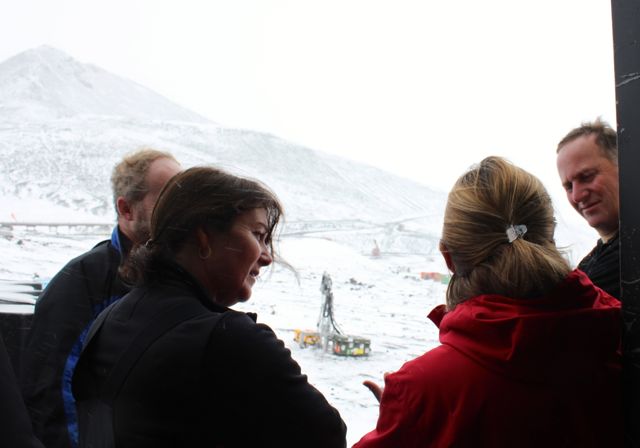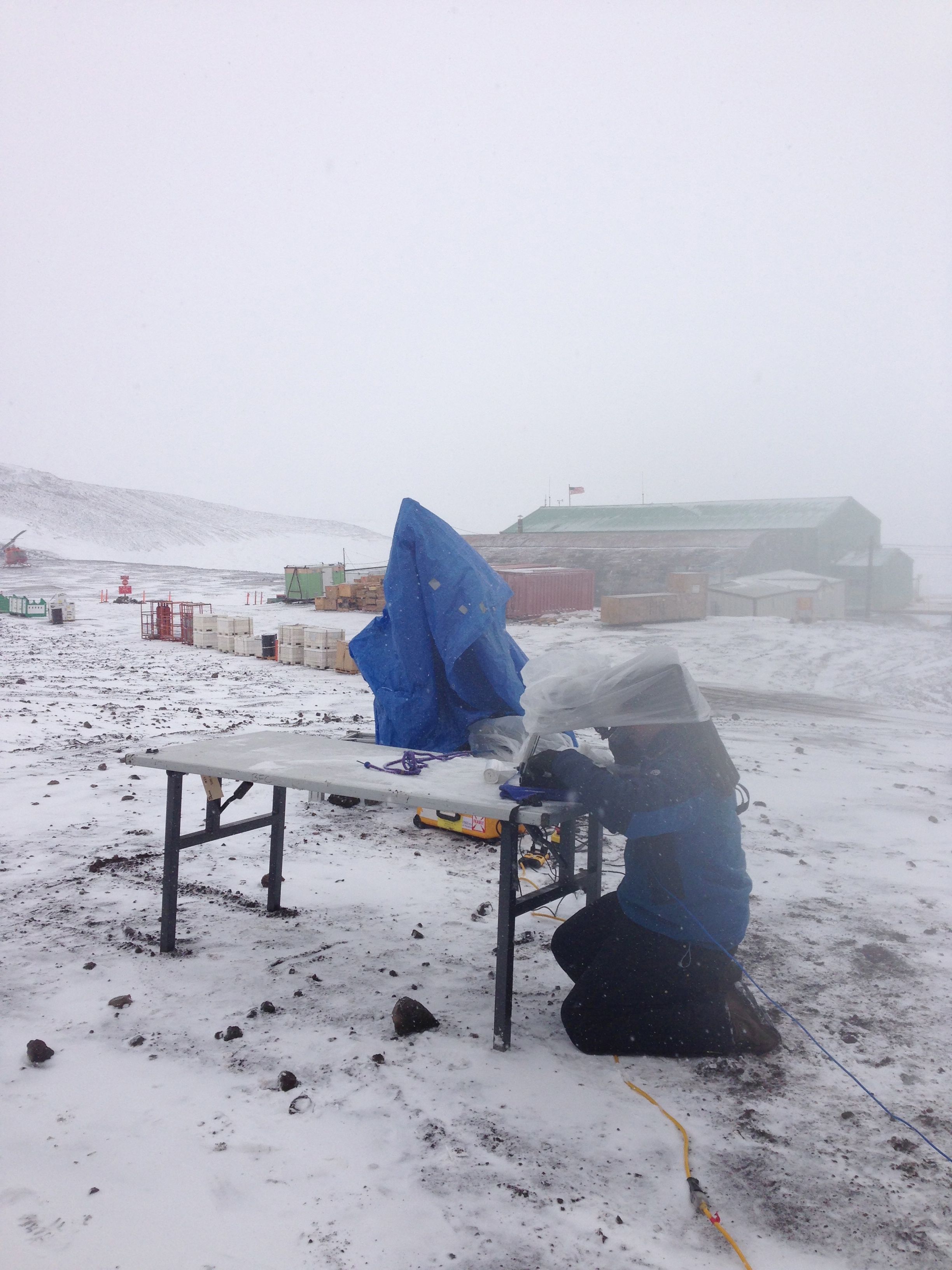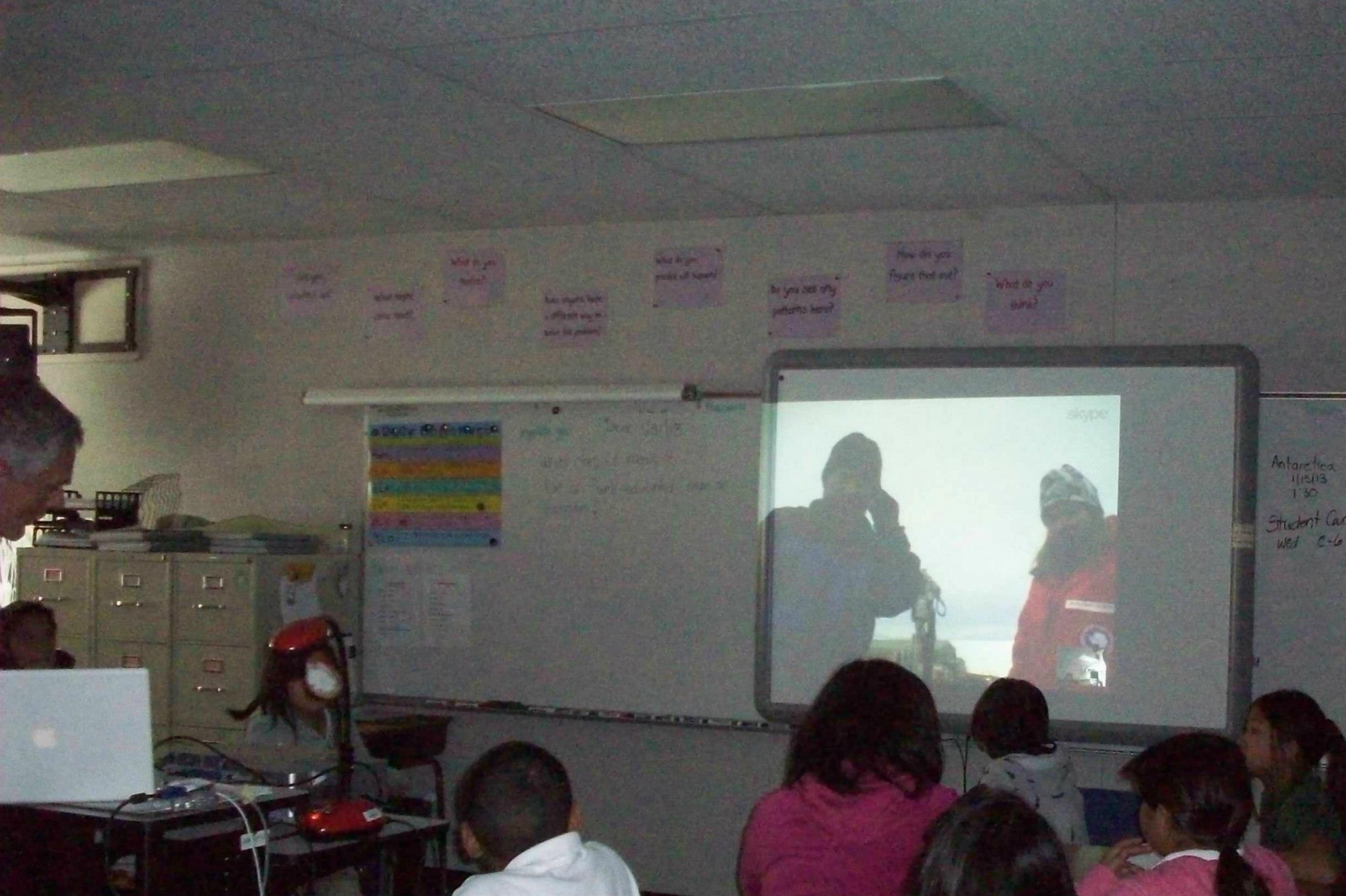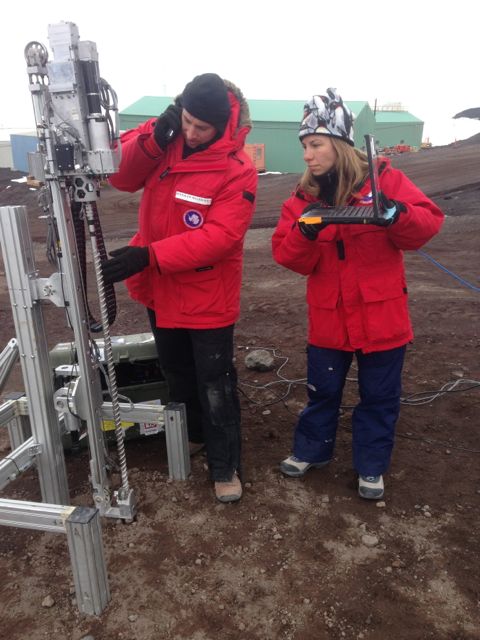One of the most frustratingly valuable aspects of testingand working in extreme environments is that nature is unpredictable, out ofhuman control, and hence likely to create unexpected problems and opportunities. Today, that led to postponed tests buta chance to brief the Prime Minister of New Zealand, John Key, who with hiswife Bronagh Key had themselves planned to go today to the South Pole.
However, this morning featured 25F/-4C temperatures, 20ktwinds with powdery snow (we now have about 8 in on the ground) and lowvisibility, so both air travel and our tests outside camp were scratched. Thisled the PM and his entourage to visit the science (Crary) lab facility thismorning.

Team members (Glass, Marinova) brief the Rt. Hon. John Key and his wife Bronagh during their tour of Crary Lab today.
We struggled to get our morning E/PO done, given the weatherconditions and an unexpected software problem. We recovered in time for a Santa Rosa, CA charter school andits students (mostly homeschooled) to operate the Icebreaker drillremotely. An article is in theSanta Rosa Press-Democrat (http://www.pressdemocrat.com/article/20130118/ARTICLES/130119457/1350?Title=Hands-on-look-at-a-mission-to-Mars). Since we had gotten the drill running for the students, it was easy toremove the tarps and do a show-and-tell 90 minutes later for the Rt. Hon. Mr.Key. It helped that we were thelast stop on his laboratory tour, as there was some time left forquestions.

In challenging working conditions, Bolek Mellerowicz configures the Icebreaker drill control software for an educational outreach session this morning, prior to removing the tarp protecting the drill.
Hence weather frustrated our original plans… but also createda unique opportunity, as long as we could be flexible and adapt to changingcircumstances (in the best NASA traditions).


